Thirty years after Estonia restored its independence after the Soviet occupation, the voices that led its pivotal Singing Revolution will finally reach American ears – through a musical about the events that took place in Estonia from 1988 to 1991, just before the collapse of the Soviet Union.
The very nature of a revolution suggests that it would be an epoch-defining, transformational moment in history. One that shakes the global order to its core, thrusting a country and its people into the spotlight while searing the entire experience into our collective memory. And for many revolutions that is certainly the case. However, curiously, there’s one modern revolution that’s largely evaded public awareness the world over.
The Singing Revolution of 1991 ultimately canonised the restoration of independence of Estonia as well as its Baltic neighbours, Latvia and Lithuania, wresting back their sovereignty from the Soviet Union after nearly five decades of occupation.
The larger independence movement began a few years prior and was marked by a couple of notable events, such as in 1988 when a staggering 300,000 Estonians gathered to sing songs of protest, followed by 1989’s Baltic Way, a chain of some two million people who joined hands stretching across the entirety of the Baltic states.
It was the beginning of the end for the dissolution of the Soviet Union and a significant moment as the Cold War drew to a close, but it’s also a moment that’s relatively unknown to much of the world.
Now, however, American playwright and stage director Tony Spinosa is seeking to change that with his new production, “Singing Revolution: The Musical,” which will be staged at the Broadwater Theatre in Los Angeles, 29 January to 20 February 2022.
Introduced to Estonia’s history by accident
“I have written this musical to educate and enlighten audiences about Estonian heritage and culture,” Spinosa told Estonian World, adding that “I found that very few Americans are knowledgeable about this part of the world”.
It’s worth mentioning – and stands as something of a testament to Spinosa’s point – that his own introduction to Estonia’s history and its Singing Revolution happened entirely by accident.
“I was inspired by this story when I was on a cruise in the Baltics back in 2014. We were diverted from stopping in St Petersburg and we were docked in Tallinn instead. Our tour guide took us to all of the sites in charming Old Town Tallinn, and then she took us to the Song Festival Grounds and began to explain the events of the Singing Revolution.”

Like most who hear of the Estonians’ unprecedented peaceful protest for the first time, Spinosa was “instantly fascinated by the fact that the Estonians used the power of song as a shield against the Soviets”, and as he dug deeper and deeper into the story, he found it to be “the quintessential example of the power of peaceful resistance, and a story that I wanted to share with the world”.
The power of the country’s sonic legacy
Since that initial visit in 2014, Spinosa has been back to Estonia four times, twice as a guest of former president Toomas Hendrik Ilves for the annual Friends of Estonia Conference. But it was during a visit in 2019 when he got to witness the Laulupidu – Estonia’s renowned choral celebration – that the sheer power of the country’s sonic legacy crystallised in his mind. “I had heard about the song festival but my experiencing it in person was a weekend that I will never forget. To hear 37,000 voices singing as one is something that I will never forget.”
That experience, coupled with a series of interviews he conducted with a number of people who led the revolution such as Jüri Joost, Heinz Valk, Trivimi Velliste and Marju Lauristin provided Spinosa with plenty of source material to begin crafting his production. Likewise, he credits “The Singing Revolution”, a 2006 documentary by American filmmakers James Tusty and Maureen Castle Tusty, with providing a “clear overview of the history of Estonia and the events that happened during the revolution”.
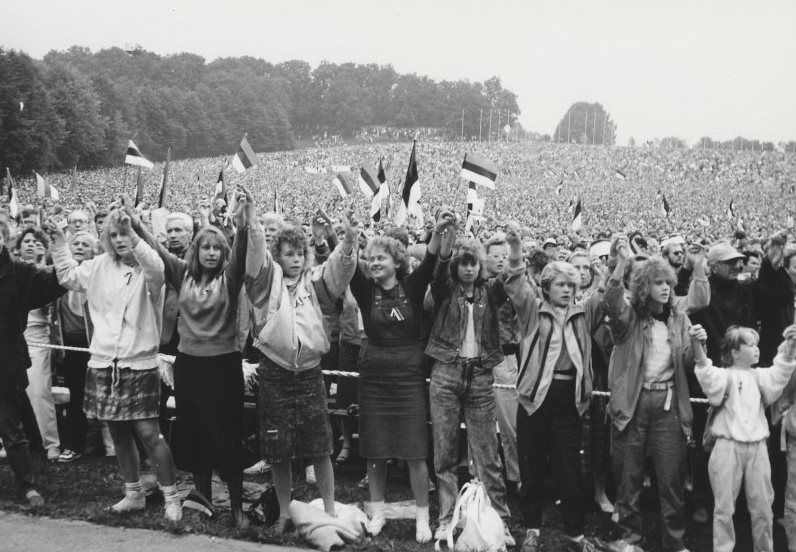
He went on to explain that “It is hard to believe that before my first visit to Tallinn, Estonia in 2014 I had known very little about this country and their culture. Since then, I have developed a deep appreciation for the people of Estonia as I learned about their passion, integrity and perseverance.”
Of course, it’s one thing to harbour a sincere reverence for a culture outside your own, but something else entirely to do it justice with a work of art. Much to Spinosa’s relief, however, following the first two previews of his production in Hollywood, the reception not only from the Americans in the crowd but, more importantly, the Estonians, was largely positive.
“I was sceptical about their reaction to an American musical, based on Estonian history that is being told with a europop score,” Spinosa said. “To my surprise, the accolades and gratitude that I received from them was overwhelming. They thanked me for telling such a beautiful story and representing Estonia in such historic detail.”
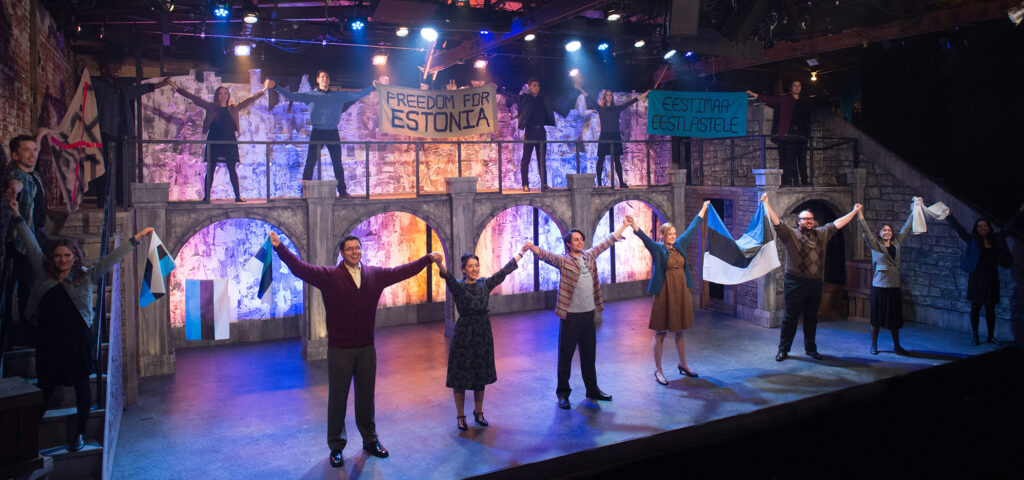
Corollaries between Estonia’s history and the current socio-political climate
Whether it’s because Estonia restored its independence a mere 30 years ago, or because history tends to repeat itself like a fractal splintering throughout time, Spinosa sees numerous corollaries between Estonia’s history and the current socio-political climate with its myriad revolutionary campaigns.
“When I began to write the book to the musical with my writing partner, James Bearhart, we had no idea that many of the events in the Singing Revolution would resonate in today’s world. The correlation of the Baltic Chain and the recent [Black Lives Matter] movement, and the attack of the US Capitol on 6 January 2021 seemed like a repeat of the attack on Toompea Castle,” a reference to a group of some 5,000 Soviet sympathisers who attacked the Estonian parliament building in 1990.
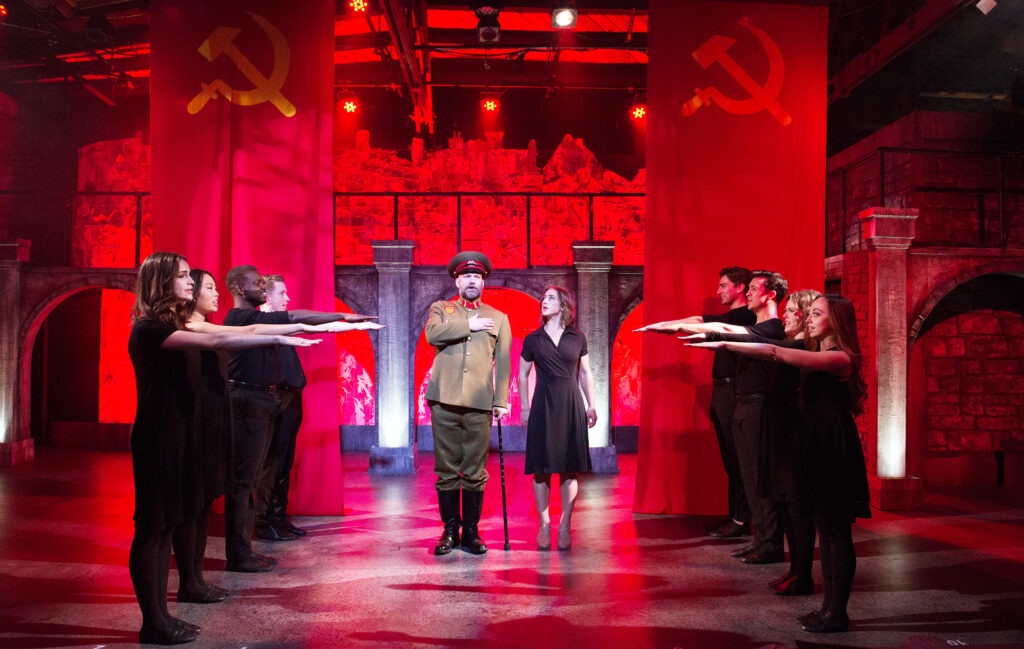
Nevertheless, the lessons that Spinosa said he hoped audiences take away from “Singing Revolution: The Musical” is the bedrock principle that makes this story so compelling in the first place and enabled Estonians to realise a brighter future for generations to come.
“To see this small country achieve its re-independence from the Soviet Union through the power of peaceful protest is a beautiful example to the world that violence is not always the answer. The Estonians have proven to the world that we can achieve great things if we remain true to our beliefs and act out of kindness. The Estonians’ love of music and singing is a cultural pastime, and to learn about how they used this as a ‘shield’ against the Soviet attacks still inspires me to this day.”
“Singing Revolution: The Musical” is staged at the Broadwater Theatre in Los Angeles until 20 February 2022.

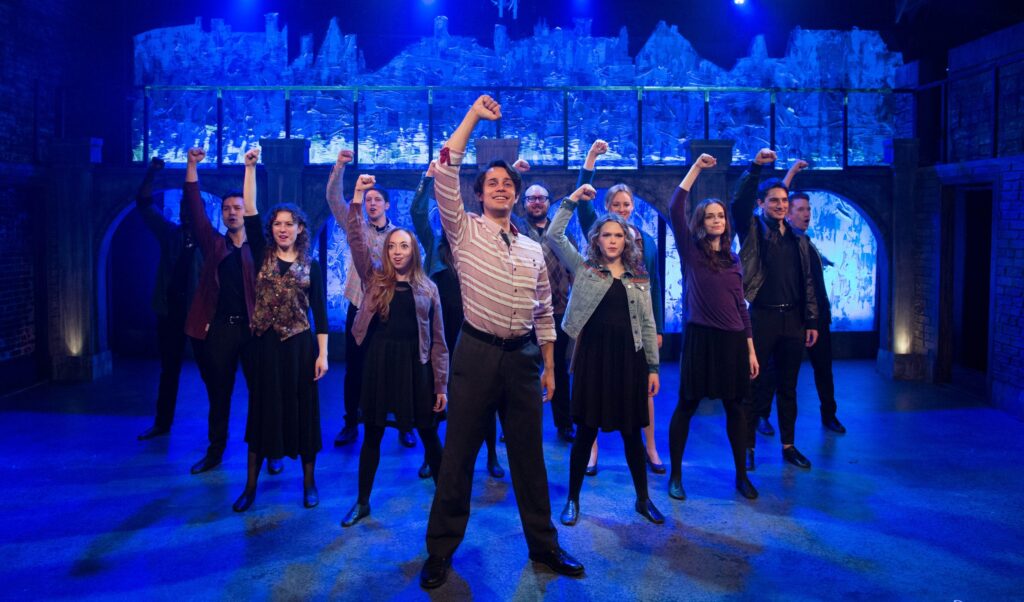
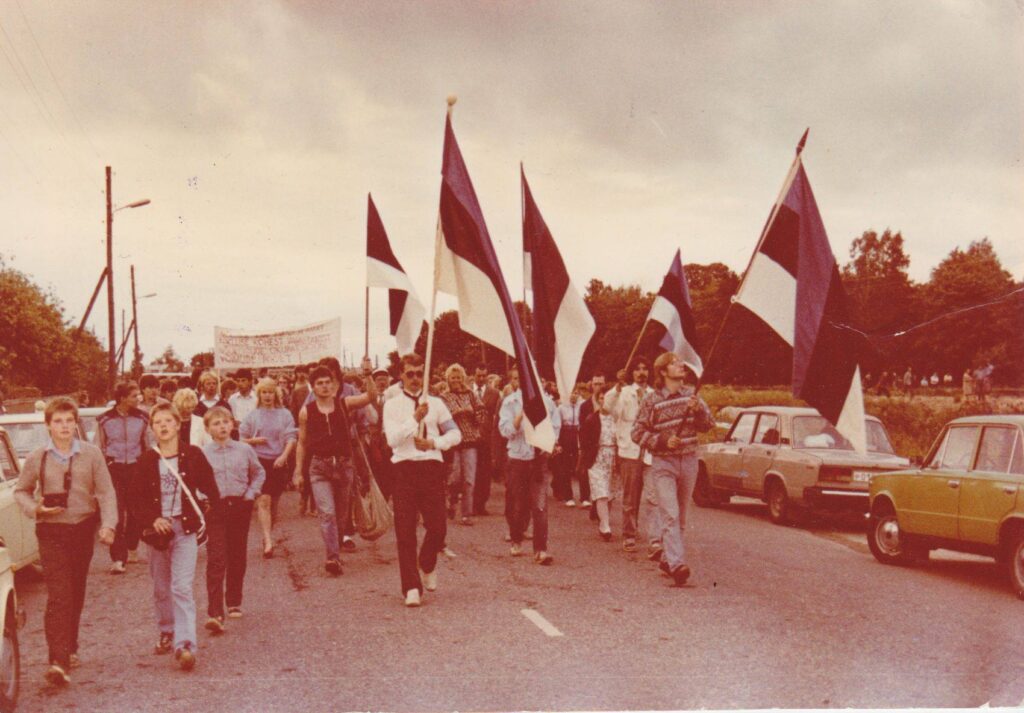
Are any of the original songs by the likes of Alo Matiissen featured? They epitomised the mood of the time
Is the production being filmed? I live in New York State and my late husband’s family are Estonians. Have visited several times. I have materials from his father..awards, prizes, etc. As he was a writer, photographer, etc. His story is amazing. Would love to share it and see the musical! Please! Aitah!